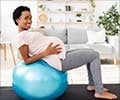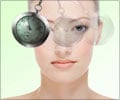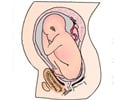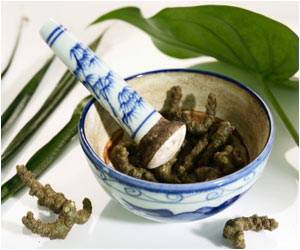A review of non-drug pain relief therapies suggests that hypnosis and acupuncture may ease labor pain.
A review of non-drug pain relief therapies suggests that hypnosis and acupuncture may ease labor pain.
"There is too little research to assess how effective many complementary therapies will be with pain management in labor," said lead study author Caroline Smith. Further research is needed, she said, but "the results concerning acupuncture and hypnosis are encouraging."In addition to hypnosis and acupuncture, the review examined the effects of massage, relaxation, aromatherapy, acupressure and white noise on pain relief. But the review did not turn up enough evidence to determine if any of the other therapies bring women significant comfort.
The meta-analysis compiles data from 14 studies that included more than 1,400 women. Five studies examined hypnosis, while three studies gauged acupuncture’s effect on pain relief.
"More robust research and more research trials have been undertaken for these two therapies versus the other treatments," said Smith, a research fellow at the University of Adelaide in Australia.
The review appears in the current issue of The Cochrane Library, a publication of The Cochrane Collaboration, an international organization that evaluates research in all aspects of health care. Systematic reviews draw evidence-based conclusions about medical practice after considering both the content and quality of existing trials on a topic.
Hypnosis reduces the need for drug pain relief in labor, lessens the need for medications that augment labor and increases the number of spontaneous vaginal births, according to the available data. The women treated with acupuncture reported more satisfaction with their labor pain management versus the mothers who did not receive that treatment, the review found.
Advertisement
Other gauges of the effectiveness of the labor pain-relief therapies included clinical outcomes like the length of labor, the need to use instruments to assist labor and trauma to the perineum.
Advertisement
Women who give birth at home or in a community birth center are more likely to use acupuncture, Simkin said, because acupuncture practitioners rarely have treating privileges at hospitals. That limited access is a barrier to treatment that has worked well for pain management, Simkin said.
"This Cochrane review might lower that barrier a little bit," said Simkin, a faculty member at the Seattle Midwifery School.
A doula provides informational, emotional and physical comfort to women during labor and birth, while a healthcare professional attends to the medical needs of the laboring mother and child. Simkin said a large part of her job is helping women with pain management so they don’t become overwhelmed or panicked.
"When we talk about pain relief, acupuncture can induce a very impressive sense of relaxation," she said. "So I think that it does have a place and I think that it is gaining in respect in leaps and bounds in this country."
During acupuncture, extremely thin needles are inserted into different locations on the body. Some theories on acupuncture suggest that the needles stimulate endorphins to reduce pain; other theories guess that the treatment somehow blocks pain signals from reaching the brain. During hypnosis a patient’s attention is focused narrowly to achieve changes in mood, perception or behavior.
Simkin said she’s not surprised that the best evidence on complementary and alternative therapies was for hypnosis and acupuncture. Those techniques require additional and expensive training, she said, so health researchers are motivated to figure out if mothers are wasting their money by investing in them.
But Simkin said that she — and the women for whom she provides care — employ many of the different therapies examined in the Cochrane review. Massage, in particular, is frequently used by doulas and taught to labor partners.
"If massage makes women feel more comfortable until they get another form of pain relief or if they gain a sense of mastery using some of these self-help techniques, if women find it helpful, I think that makes it worthwhile — even if it can’t be shown that they lead to fewer epidurals," Simkin said.
"I’d love to get good hard evidence on some of these things where the evidence is insufficient," she said.
Source-Newswise
SRM











